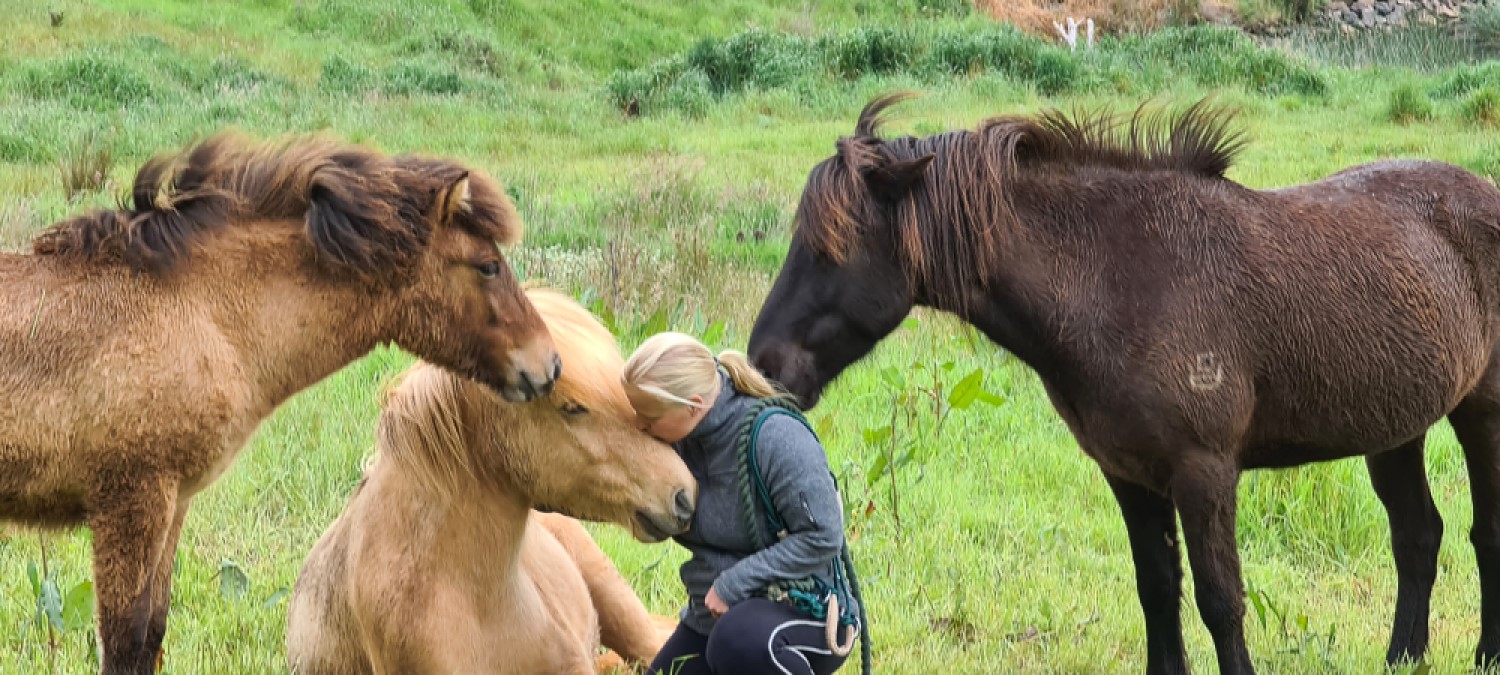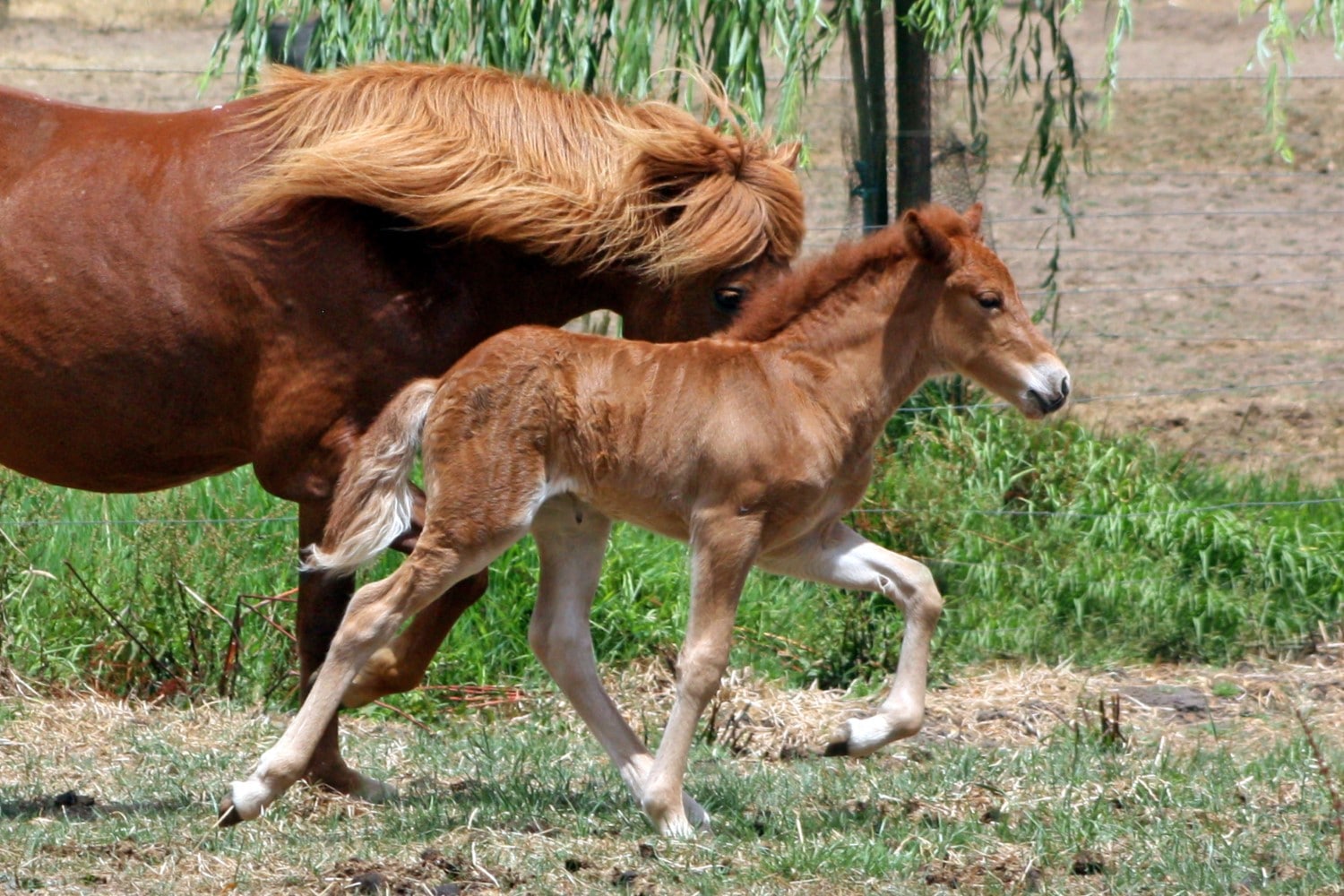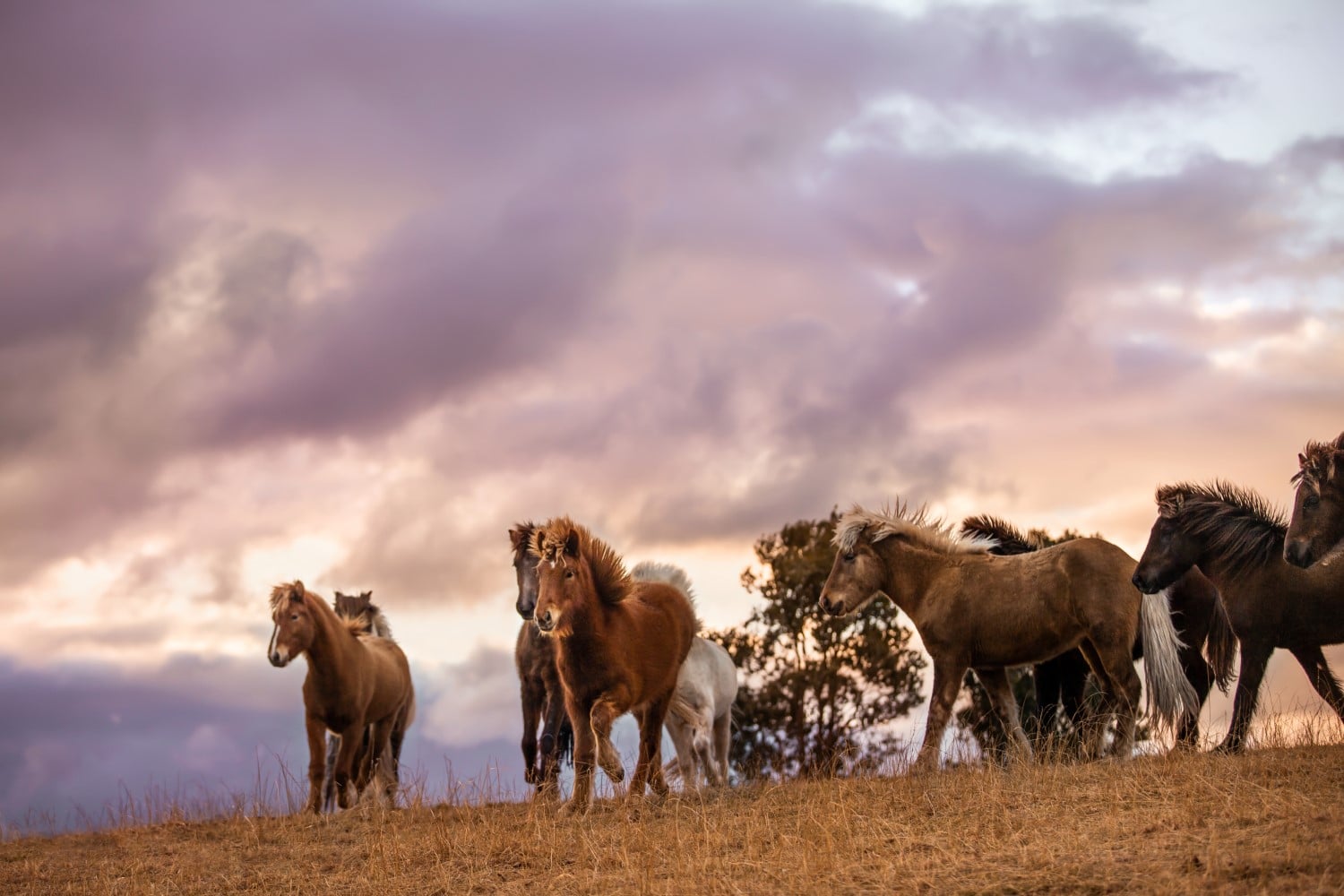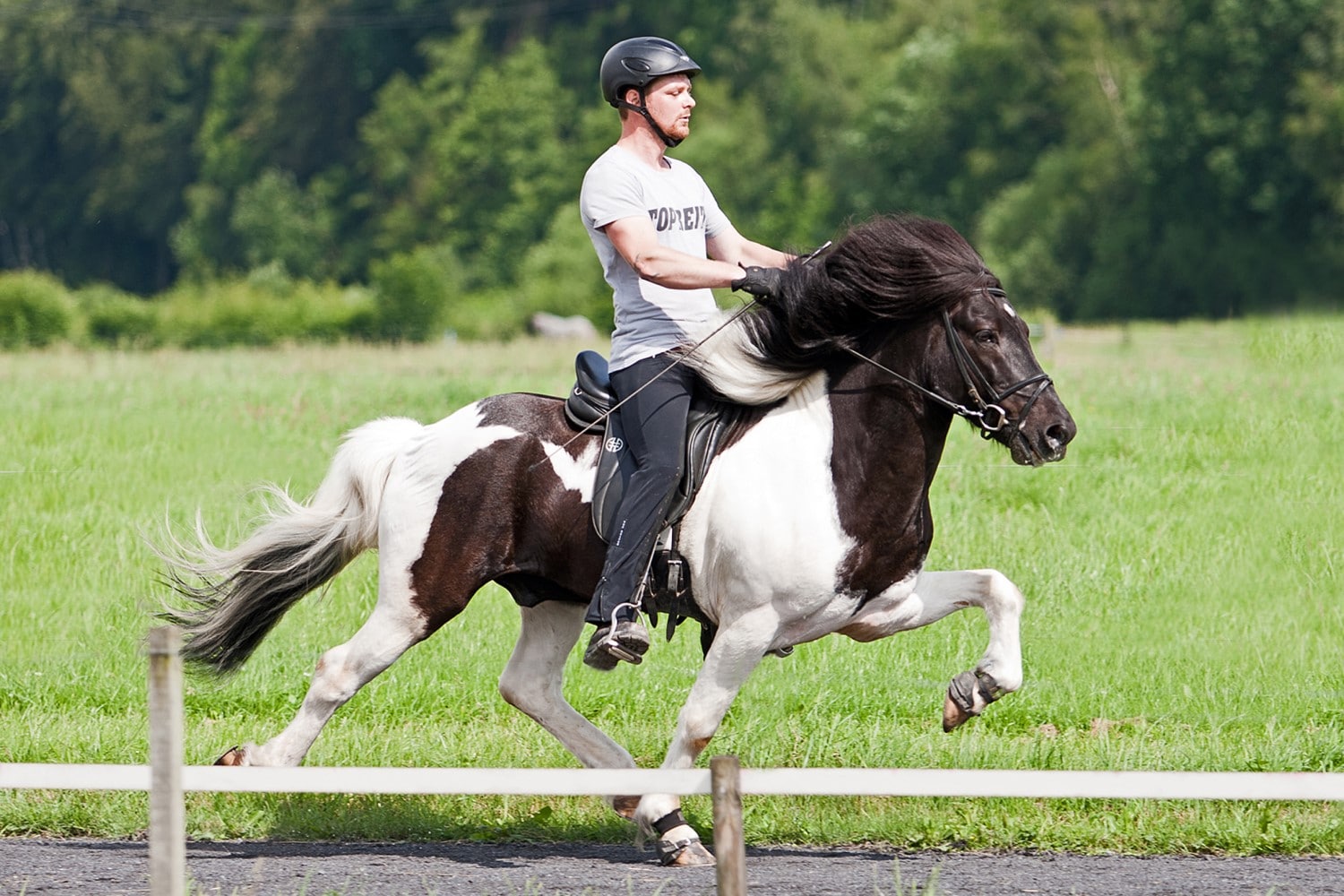Don’t call me pony! They may be small, but the Icelandic is always referred to as a horse – and they certainly pack much more than a pony-sized punch, writes AMANDA MAC.
You’ve probably heard the old adage ‘good things come in small packages’ – and if ever there was an equine breed that proves the rule, it’s the Icelandic Horse.
But what’s all the fuss about? Standing on average between 13 and 14hh, surely they must have something more going for them other than their distinctive thick (and often double-sided) mane, long tail, and wide variety of colours. And, of course, they do!

The Icelandic Horse is renowned for being hardy, athletic, independent yet adaptable, spirited but friendly, willing, and sure-footed. Some have not four but five (yes, five) natural gaits, and they’re valued as a versatile family riding horse. Bred to easily carry adults, they can move along at a cracking but very comfortable pace over quite long distances.
In Australia, you’ll find Icelandics showing off their prowess in any number of disciplines, including working equitation, dressage, agility events, trail riding, extreme cowboy racing, jumping, endurance and vaulting.
Origins
The horse of Norse myths and legends, Icelandics have an interesting history that can be traced back to the late 9th century when Viking settlers first arrived in Iceland. With them they brought horses from Norway and the British Isles, which were the main form of transport across the country’s vast tracts of rugged terrain until roads were built in the 1870s.
Since those early days, the importation of horses into Iceland has been banned. Opinions are widely divided as to exactly when this occurred, some sources say as early as 982 CE, while others suggest the late 1880s. But no matter what the date, the end result is the same: the purity of the Icelandic breed has been rigorously safeguarded.
So fierce is this protection that when in the 1920s a Norwegian Fjord stallion was bred with some Icelandic mares, the experiment was conducted on an island off the coast of Reykjavik, Iceland’s capital. It was not an outstanding success and all bets were off when the foals failed to meet expectations. Neither the stallion nor his offspring were allowed onto the mainland, and were instead exported abroad.
Often a medieval Icelander’s most prized possession, Icelandics are now seen as a way of preserving the country’s agricultural traditions while at the same time improving its economy. Long distance horse trekking is popular among both locals and tourists, while horse shows and races always draw good crowds.
The export of Icelandic Horses has increased since the first contingent was sent to Germany in the 1940s. Currently there are some 80,000 Icelandics in Iceland, and an estimated further 70,000 scattered throughout the Federation of Icelandic Horse Association’s 21 member countries.
In Australia, records indicate the presence of Icelandic Horses as early as 1863. Not much else is known of any other purebred imports until the mid-1990s, when eight fillies and a colt arrived from Denmark. After 2000, several horses where imported from New Zealand to start small breeding herds, followed by imports of breeding horses from Iceland, Germany, the USA and Canada. The purebred numbers in Australia now sit at just over 330, and come under the umbrella of the Icelandic Horse Association of Australia (IHAA).
Why call them horses?
A good question! And there are several theories: one suggests that it’s to do with the Icelandic’s spirited temperament and huge, larger-than-pony personality. The breed’s weight-carrying ability and bone structure has been offered as another explanation, and to seal the deal, there’s no word in the Icelandic language for pony. Whatever the reason, never use the words Icelandic and pony together – it just isn’t tolerated!

The Icelandic packs quite a punch. A hardy and easy keeper, they have well-proportioned heads with a straight profile and broad forehead, short muscular necks and shoulders, and a deep chest. The withers are broad and low, and relative to their somewhat short stature, their backs are quite long. They have a broad, muscular, slightly sloping croup and low set tail. Their legs are short and strong, with long cannon bones and a shorter pastern. And to cope with colder temperatures, the Icelandic has a double coat for extra insulation.
The Icelandic in Australia
One of several Icelandic Horse studs in Australia, Megalong Icelandic Horses produces around 12 purebred foals each year. Located in the Blue Mountains of New South Wales, the stud belongs to IHAA President David Harris and his wife Cathy. And there’s an interesting back story. David was in his 50s when he first learned to ride. Since then, he and Cathy have enjoyed many overseas riding holidays. But when they visited Iceland and experienced Icelandic Horses for the first time, it was game over. “We instantly loved their size, their unique and incredibly smooth gait, and their gentle friendliness,” says David.

And Cathy makes an interesting point regarding the Icelandics’ nature: “They’re the Labrador’s of the horse world,” she says. “In Iceland they have no natural predators so they don’t have the fight or flight response. When you walk into their paddock, they rush up to greet you. We feel so safe with them that we ride with our young grandchildren, who absolutely adore them.”

Interestingly, the Icelandic’s life expectancy is considerably longer than that of many other breeds. The oldest Icelandic on record was a mare who died in Denmark at the age of 57. Usually they’re not bred from until they’re five, and it’s not uncommon for them to still be producing foals into their mid-twenties, nor for them to be ridden until they’re 30.
Training
Traditionally, Icelandics are not ridden until they are four years old, and David tells me that at Megalong, they train the traditional way. “We don’t start them until they’re around four-and-a-half. The first three months of education is much the same as any other breed. They’re taught the basics: leading, floating, lunging and so on. Then they have six months rest before specialised gait training for the tölt and flying pace begins.”
There are no Australians who can train Icelandics in these unique gaits, so David employs trainers from horse farms in the Nordic countries to come to Australia specifically to train the Megalong horses. Whether this will continue in our COVID world is another question altogether.
So what is the tölt?
One of the Icelandic’s unique characteristics is the way in which they move, in that they can be either four or five gaited. A four gaited horse has walk, trot, tölt, and gallop/canter, while a five gaited horse has walk, trot, tölt, gallop/canter and the flying pace or skeið.
The tölt and the skeið are completely natural and are the result of a mutation in the DMRT3 gene, which is responsible for synchronising the left and right sides of a horse’s body. In the Icelandic (and some other breeds), this mutation allows their legs to move laterally as well as diagonally.

The tölt is a fluid movement, during which at least one foot is always in contact with the ground. Unlike the diagonal leg movement of the trot, the tölt is a lateral movement (the near side foreleg moves in unison with the near side hind leg). Even quite young foals will tölt when they’re in the paddock. The four-beat tölt is extraordinarily fast and smooth, giving the rider an almost bounce-free ride, even up to speeds of 32 kilometres an hour.
As the name suggests, faster still is the skeið or flying pace. This gait produces speeds of just under 50 kilometres an hour. It can equal the speed of a full gallop and is primarily used for racing over short distances. During the skeið, both legs on one side of the horse simultaneously touch the ground – and because it’s a two-beat gait, at one point in the stride all four hooves of the horse are suspended above the ground, hence the name ‘flying pace’.
Getting to know you
If by now you’ve joined the ranks of Icelandic Horse fandom, we can’t say we blame you! But we’ll leave the last word to David: “In the years since we started Megalong, we’ve enjoyed getting to know the breed better, as well as each of our individual horses. The Icelandic really is ideal for all ages and abilities.”
Visit www.megalongicelandichorses.com.au, www.icelandhorse.com.au, and www.icelandichorseassociationaustralia.org.au to find out more about the truly unique Icelandic Horse.



